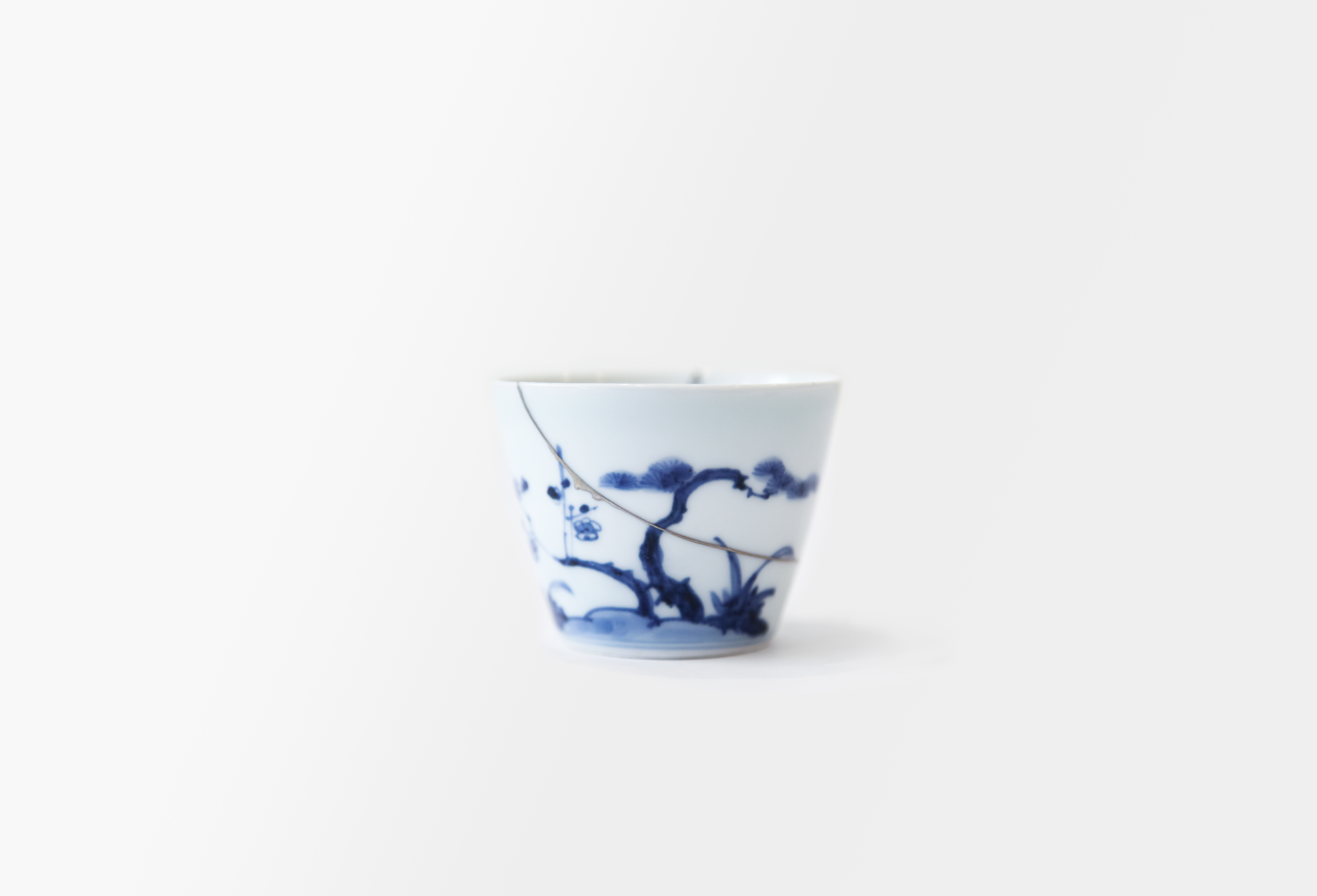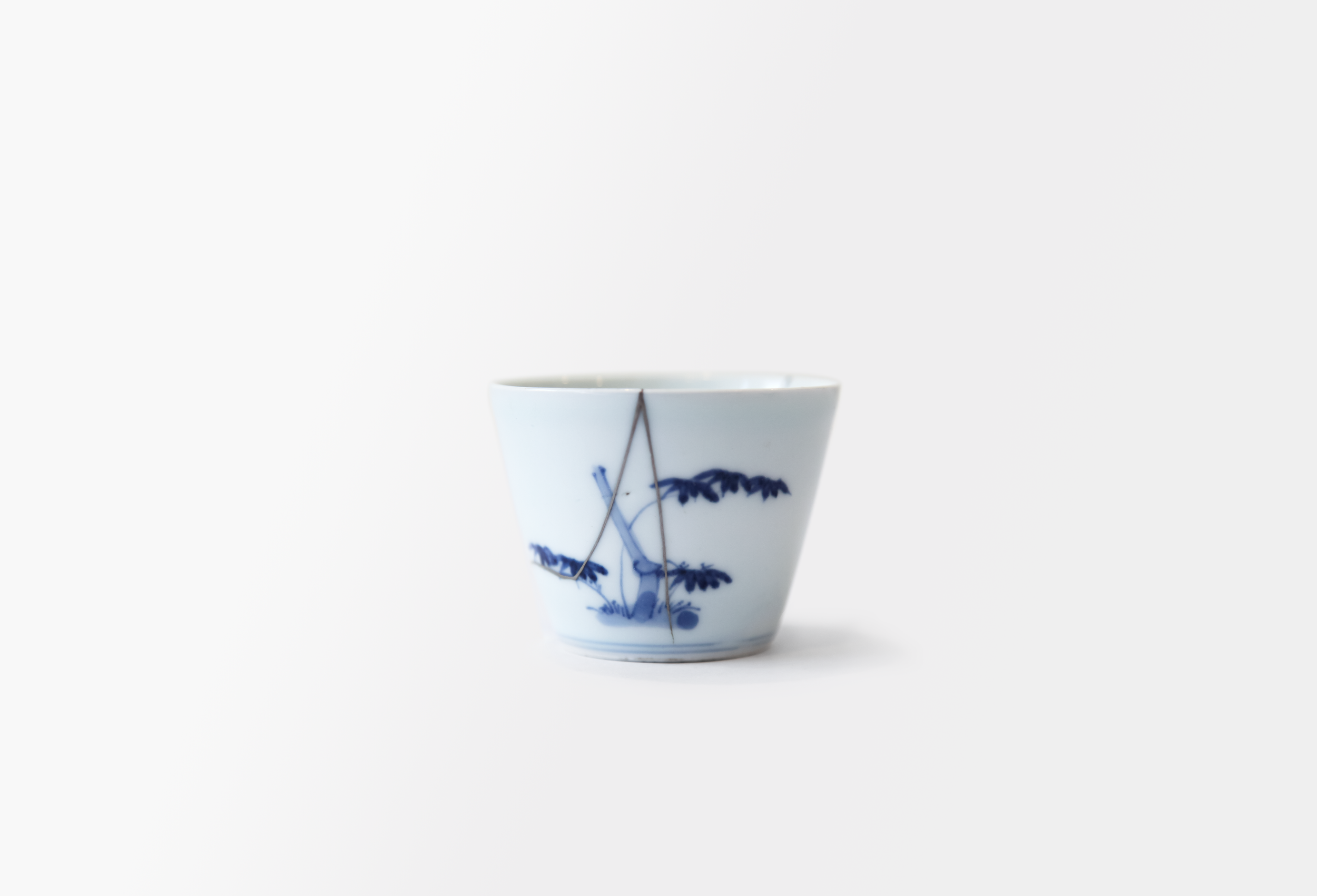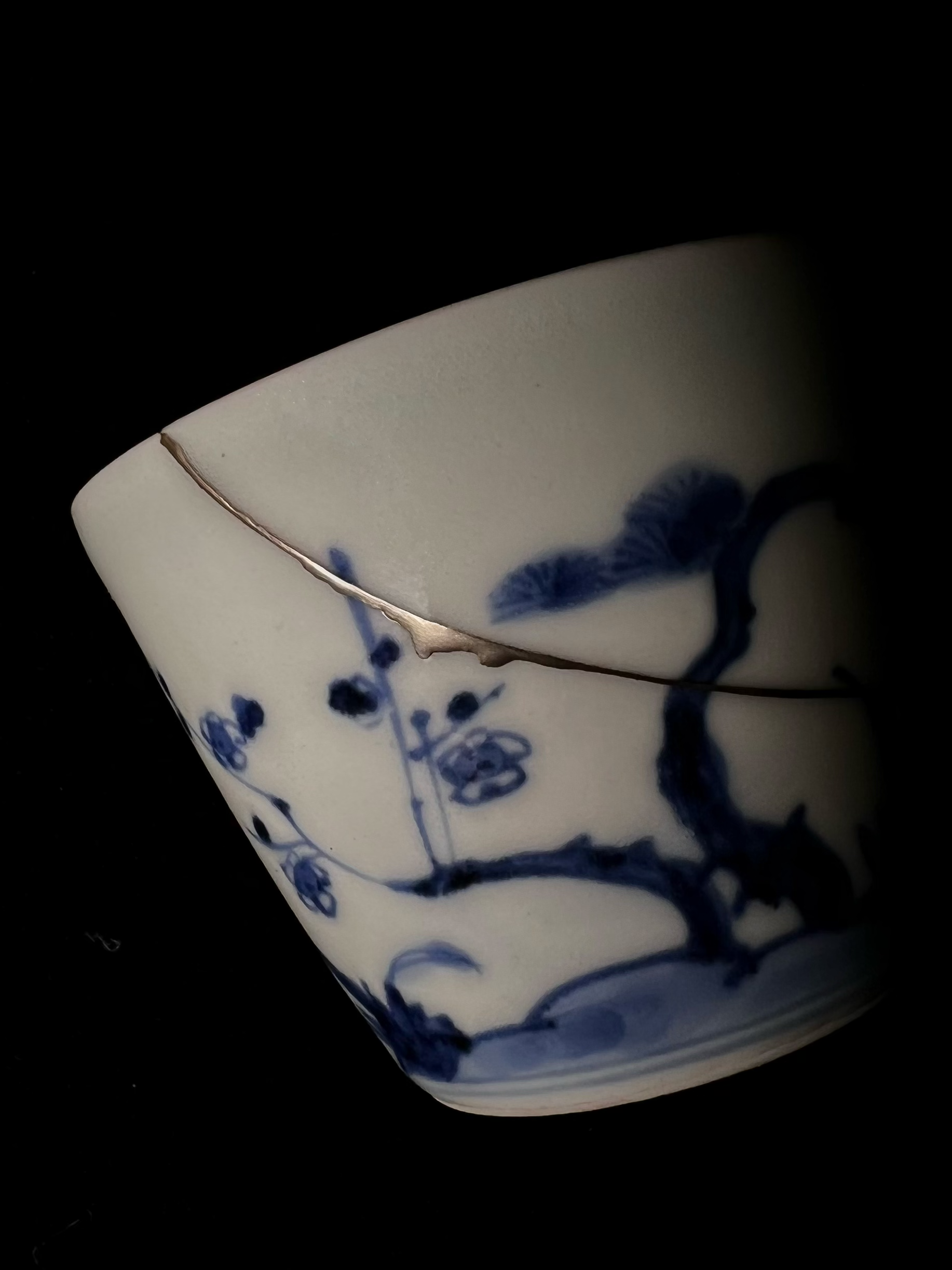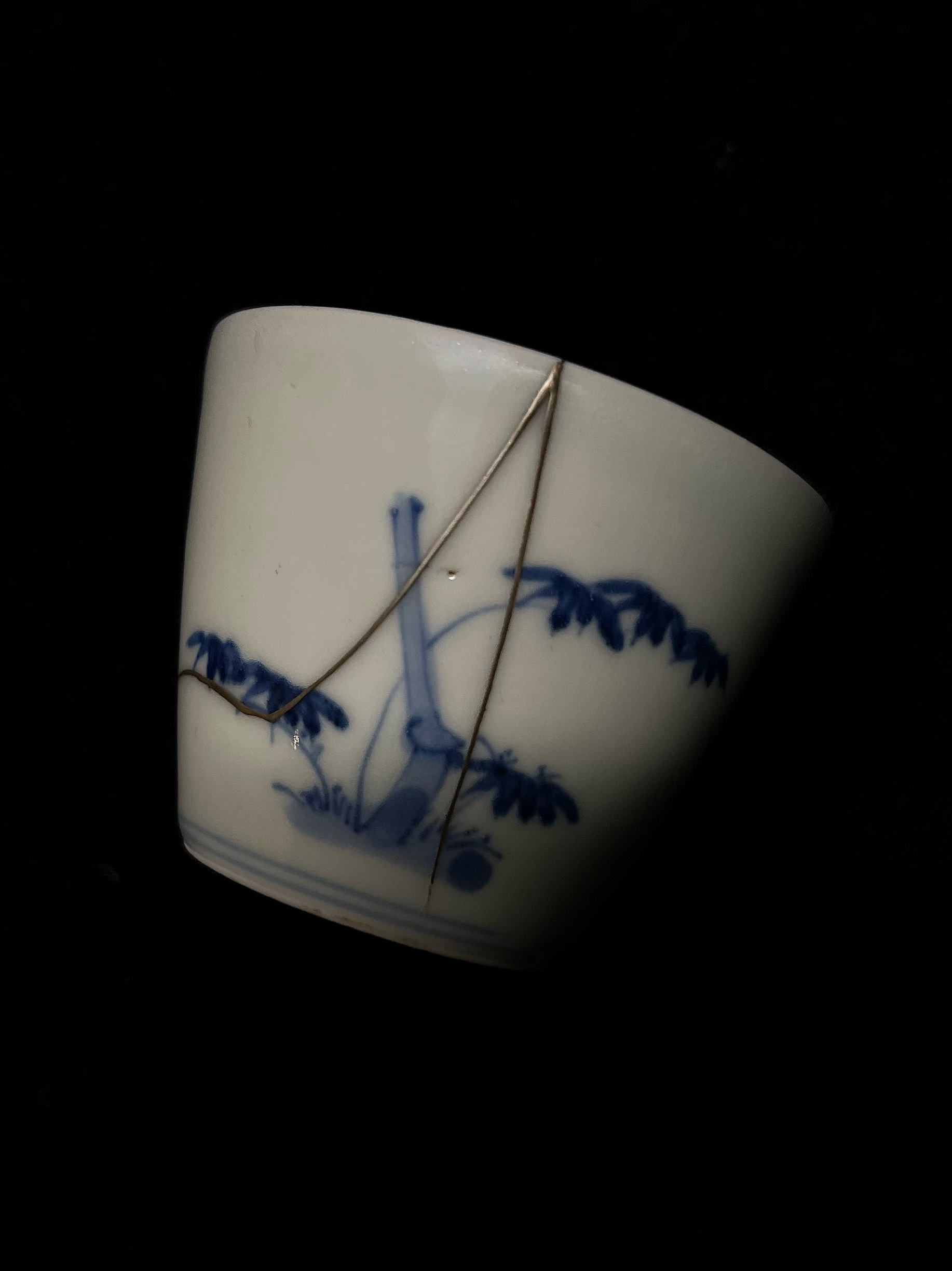Mid-EDO period/sometsuke SHOU-CHIku-bai choko
江戸中期/染付松竹梅図猪口
SOMETSUKE
The sometsuke technique involves painting a pattern on a bisque-fired, unglazed piece with a pigment called gosu (zaffre, from roasted cobalt ore), applying a transparent glaze over that, and then firing it again to bring out the vivid blue. Its appearance brings to mind an indigo-dyed kimono, which explains the origin of its name.
Sometsuke ware is said to have been introduced to Japan from the end of the Momoyama period (1573-1600) to the beginning of the Edo period (1603-1868). Inspired by the underglaze blue and white porcelain imported from China, Japan's original underglaze blue and white porcelain was produced in the kilns of Arita in Saga Prefecture, Japan. The underglaze blue and white porcelain produced in Arita is called "Ko-Imari" or "Early Imari," and the value of its designs is highly evaluated even today.
SHOU-CHIKU-BAI
"Pine," "bamboo," and "plum" are three plants that grow well even in the coldest season of winter, and have been used in many illustrations since ancient times in Japan as a symbol of good fortune.
MUSHI-KUI
The small, granular indentations that dot the surface are called "mushikui," and among Japanese SUKIMONO (people who are devoted to the tea ceremony in addition to their main occupation), these "mushikui" are widely accepted as wabi scenery. Incidentally, "mushikui" is a type of defect that occurs when somewhat inferior clay is used.



